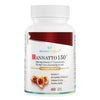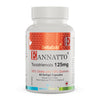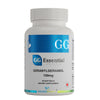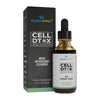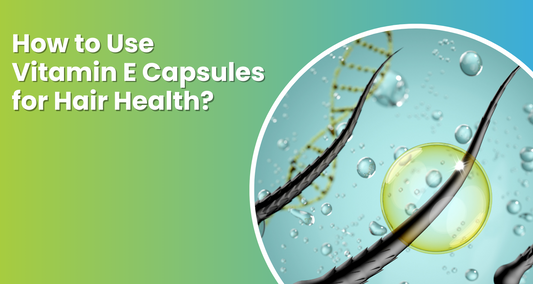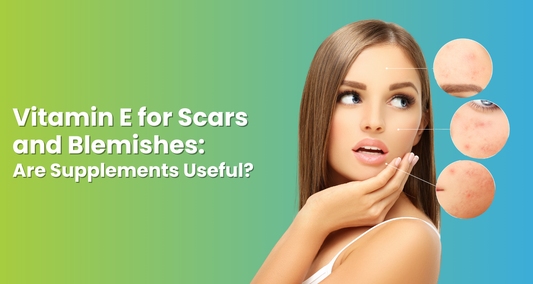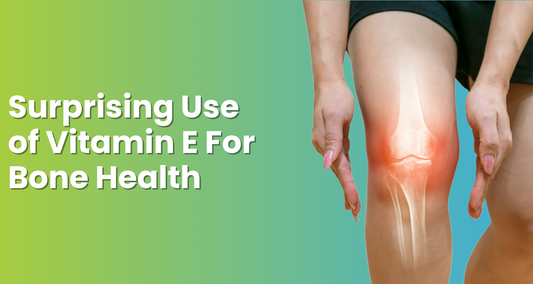In the early 20th century, two scientists, Evans and Bishop, embarked on a journey that revealed an essential component for fertility in female rats, later identified as the Vitamin E. This substance, scientifically baptized as Tocopherol, derived its name from Greek words: ‘Tokos’ (childbirth), ‘Phero’ (to bring forth), and ‘ol’ to signify its alcohol properties.
The discovery of vitamin E opened a new chapter in scientific research, revealing its multifaceted roles in various biological activities and pathophysiological conditions.
Vitamin E – A Powerful Family
Vitamin E is not just a single nutrient but a whole family of power-packed members, each with its own unique strengths and roles in keeping our bodies healthy.
This family includes two main groups: Tocopherols and Tocotrienols, each further divided into four types - Alpha, Beta, Gamma, and Delta.
Our bodies have a whopping 75 trillion cells, each wrapped in a special membrane that needs protection from oxidative damage. Vitamin E is nature’s chosen guardian for our cell membranes, thanks to its unique shape that fits perfectly in there.
Vitamin E Tocotrienols: Stepping Out of the Shadow of Tocopherol
Tocopherols and Tocotrienols are vital members of the Vitamin E family. Yet they exhibit distinct structural differences, varied potencies, and efficiencies in their functionalities.
While α-Tocopherol often takes the spotlight in the Vitamin E family, more recent scientific discoveries have elucidated the distinct health benefits that Tocotrienols bring to the table, enabling them to step out of the Tocopherol shadow.
Structure
Tocotrienols have demonstrated a remarkable ability to potentially reduce cholesterol levels and exhibit potent antioxidant properties thanks to their unique farnesylated tail, which allows them to move with superior mobility across cell membranes.
On the other hand, Tocopherols, with their saturated phytyl tail, anchor deeply into lipid membranes, rendering them less mobile and, consequently, less efficient as free radical scavengers than Tocotrienols.
Natural
Today, many of the “natural” alpha-tocopherols you can buy are half-natural, half-man-made. They take Tocopherols from soy and corn and change them in a lab to make them into alpha-tocopherol. Even though you can find synthetic (completely artificial/man-made) Tocopherol, there’s no such thing as synthetic Tocotrienols.
Tocotrienols come directly from foods like Annatto, Palm, and Rice. And if you’re looking for the foods with the most Tocotrienols, Annatto is your best bet!
Bioavailability
The bioavailability of Tocotrienols emerges as a compelling topic, especially when juxtaposed with Tocopherols. Tocotrienols, particularly their ability to easily penetrate cell membranes, owing to their unsaturated side chains, enhance their antioxidant potency, safeguarding cells from oxidative stress and damage.
Furthermore, they have a beneficial role in neuroprotection, cardiovascular health, and skin protection, broadening their applicability and utility in health and wellness.
Tocotrienols are absorbed and distributed throughout the body more efficiently than Tocopherols. They efficiently reach vital organs due to their unsaturated side chains, enhancing their antioxidant capabilities.
Tocotrienols’ Time to Shine
While lots of previous studies have been focusing on alpha-tocopherol, Tocotrienols are starting to get their well-deserved attention. With buyers leaning more toward natural vitamin E, Tocotrienols are stepping into the spotlight.
Thus, Tocotrienols are gradually emerging as a focal point in nutritional science, revealing that they are not merely an echo of Tocopherols but possess a unique nutritional profile that warrants independent recognition and further research.
Check out our revolutionary Vitamin E – Eannatto DeltaGold Tocotrienols Vitamin E Supplement.
Vitamin E – Frequently Asked Questions (FAQs)
Question: Is vitamin E destroyed by air?
Answer: Vitamin E can oxidize and lose potency when exposed to air for prolonged periods.
Question: Does vitamin E break down with heat?
Answer: High temperatures can degrade vitamin E, reducing its nutritional value.
Question: What are the different types of Vitamin E capsules available in the market?
Answer: The various types of Vitamin E capsules typically contain one or both of the two main forms of Vitamin E: tocopherols and tocotrienols.
Question: Which is considered the best type of Vitamin E for supplementation?
Answer: The best type of Vitamin E is generally regarded as natural Vitamin E, which is derived from food sources and is more readily used by the body. Among the two main forms, tocotrienols are gaining attention for their potent antioxidant properties and potential health benefits, making them a strong contender as the best type of Vitamin E for various health applications.
Question: Can you explain the different types of Tocopherol found in Vitamin E?
Answer: Vitamin E encompasses a group known as tocopherols, which itself is divided into four types: alpha-tocopherol, beta-tocopherol, gamma-tocopherol, and delta-tocopherol.
Question: What are the two types of Vitamin E and how do they differ?
Answer: The two types of Vitamin E are tocopherols and tocotrienols. While both types have antioxidant properties, they differ in their molecular structure and specific health benefits. Tocopherols are more commonly found in supplements and have been extensively researched, whereas tocotrienols, often sourced from tropical sources, are being studied for their potential roles in protecting cellular health and lowering cholesterol, among other benefits.
Question: How is vitamin E broken down?
Answer: Vitamin E is broken down by the liver, which sends Vitamin E to the bloodstream via lipoproteins, ensuring it reaches the required cells.
Question: What blocks vitamin E absorption?
Answer: Low-fat diets may hinder vitamin E absorption.
Question: Vitamin E for which skin type is most beneficial?
Answer: Vitamin E is versatile and can be beneficial for all skin types. For dry skin, Vitamin E provides moisturization and can help repair damaged skin barriers. For oily and acne-prone skin, Vitamin E can assist in regulating sebum production and has anti-inflammatory properties that may help soothe irritation. Sensitive skin may also benefit from Vitamin E's ability to combat environmental stressors and calm skin redness.
Question: Does sunlight destroy vitamin E?
Answer: Vitamin E can degrade with exposure to sunlight, particularly UV light.
Question: What is the difference between vitamin E and Tocopherol?
Answer: Vitamin E is a group of eight fat-soluble compounds, including four types of tocopherols.
Question: What are the different types of Vitamin E and their uses in health and skincare?
Answer: The two primary types of Vitamin E, tocopherols and tocotrienols, each with their subtypes (alpha, beta, gamma, and delta), have various uses in health and skincare. Tocopherols are widely used in skincare for their antioxidant properties, helping to protect the skin from oxidative stress and environmental damage. Tocotrienols, on the other hand, are being researched for their potential to support heart health, lower cholesterol levels, and provide neuroprotective benefits. Both types contribute to skin health, immune function, and cellular protection differently.
Question: What is the most absorbable form of vitamin E?
Answer: Natural Delta and Gamma Tocotrienols are more absorbable than synthetic man-made Vitamin E.
Question: How can I absorb vitamin E better?
Answer: Ensuring a diet with healthy fats and considering supplements with both tocopherols and tocotrienols can enhance vitamin E absorption.
Disclaimer: These statements have not been evaluated by the FDA. The information contained within this page is for educational purposes only. It is not intended to replace the advice or attention of health care professionals.
